1
Alfred Crocker (A.C.) Leighton Packing into the Mountains for Painting Trip20th Century, Circa 1920's
Rocky Mountains, Western Canada
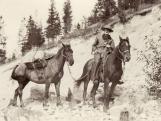 Credits:
Credits:The Leighton Foundation Permanent Collection (Photograph)
2
Alfred Crocker (A.C.) Leighton Painting at Mount Assiniboine20th Century, 1920's
Mount Assiniboine, British Columbia, Canada
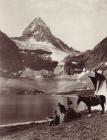 Credits:
Credits:The Leighton Foundation Permanent Collection (Photograph and Text)
Glenbow Archives RCT-172 (Recording)
3
Alfred Crocker (A.C.) Leighton's Drawing Supplies20th Century
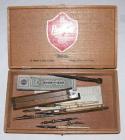 Credits:
Credits:The Leighton Foundation Permanent Collection (Artifact)
4
Alfred Crocker (A.C.) Leighton's Watercolours Palette and Brushes20th Century
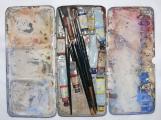 Credits:
Credits:The Leighton Foundation Permanent Collection (Artifact)
5
"Mount Assinaboine, Lake Magog" Watercolour Painting by Alfred Crocker (A.C.) Leighton20th Century, Circa 1925
Mount Assiniboine, British Columbia, Canada
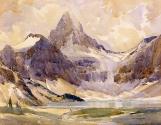 Credits:
Credits:Canadian Pacific Archives (Artwork)
6
Grumbacher-Wood and Linoleum Block Cutting Tools owned by Barbara Leighton (Barleigh)20th Century, Circa 1930's-1980's
 Credits:
Credits:The Leighton Foundation Permanent Collection
7
"Mount Assinaboine" Lino-Block Print by Barbara Leighton (Barleigh)20th Century, Circa 1930's-1980's
Mount Assiniboine, British Columbia, Canada
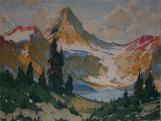 Credits:
Credits:The Leighton Foundation Permanent Collection (Artwork)
Leighton Staff (Text)
8
A.C. Leighton and AssinboineDuring his time as an artist for the CPR, A.C. Leighton discovered Assiniboine. He would return to the region several times in his painting career, as he found the scenery exactly to his liking. His first trip, in 1927, was plagued by heavy snow, and attempts to paint were thwarted when his watercolours froze, so he switched to pastels. Leighton was very satisfied with the results of the Assiniboine trip, and completed nearly one dozen sketches during his eleven day stay, depicting what he thought to be "some of the most fascinating scenery in the world". The snow was unrelenting, and he wrote upon arrival back in Banff on October 12, "When I arrived my outside clothing which was covered with snow had turned to ice, like a suit of armour and tin hat. We made camp tonight in the dark. The food we had brought was all frozen."